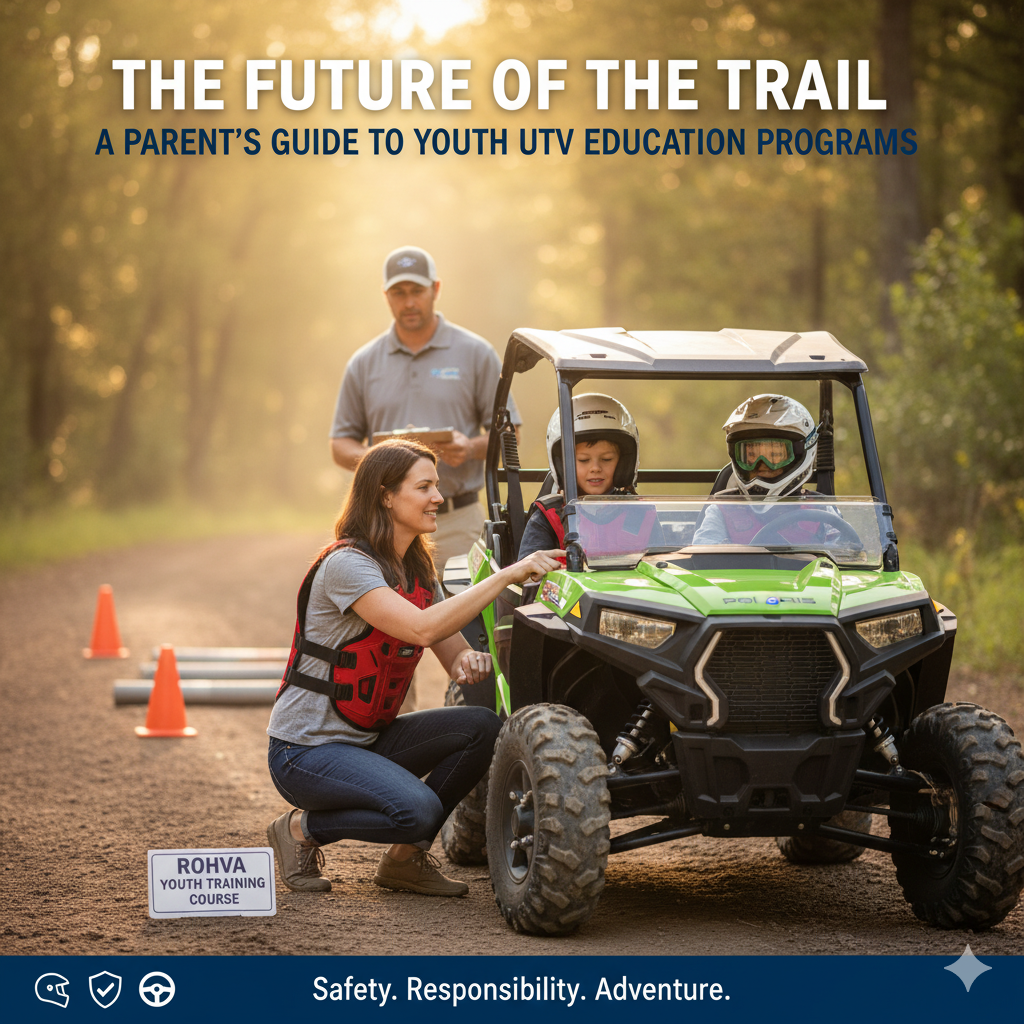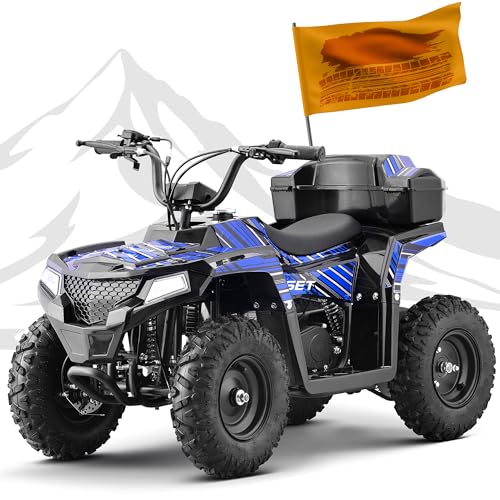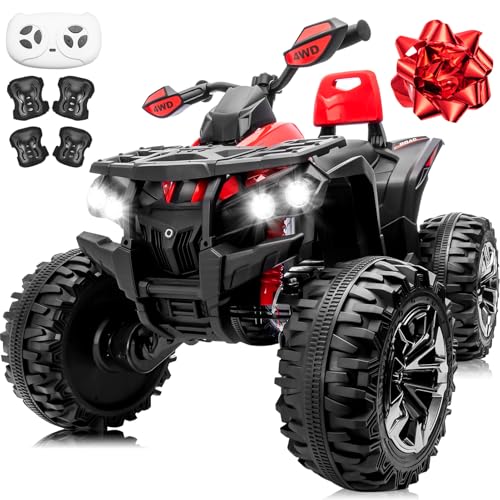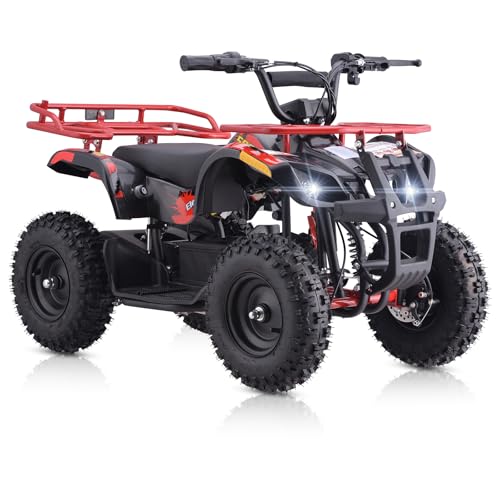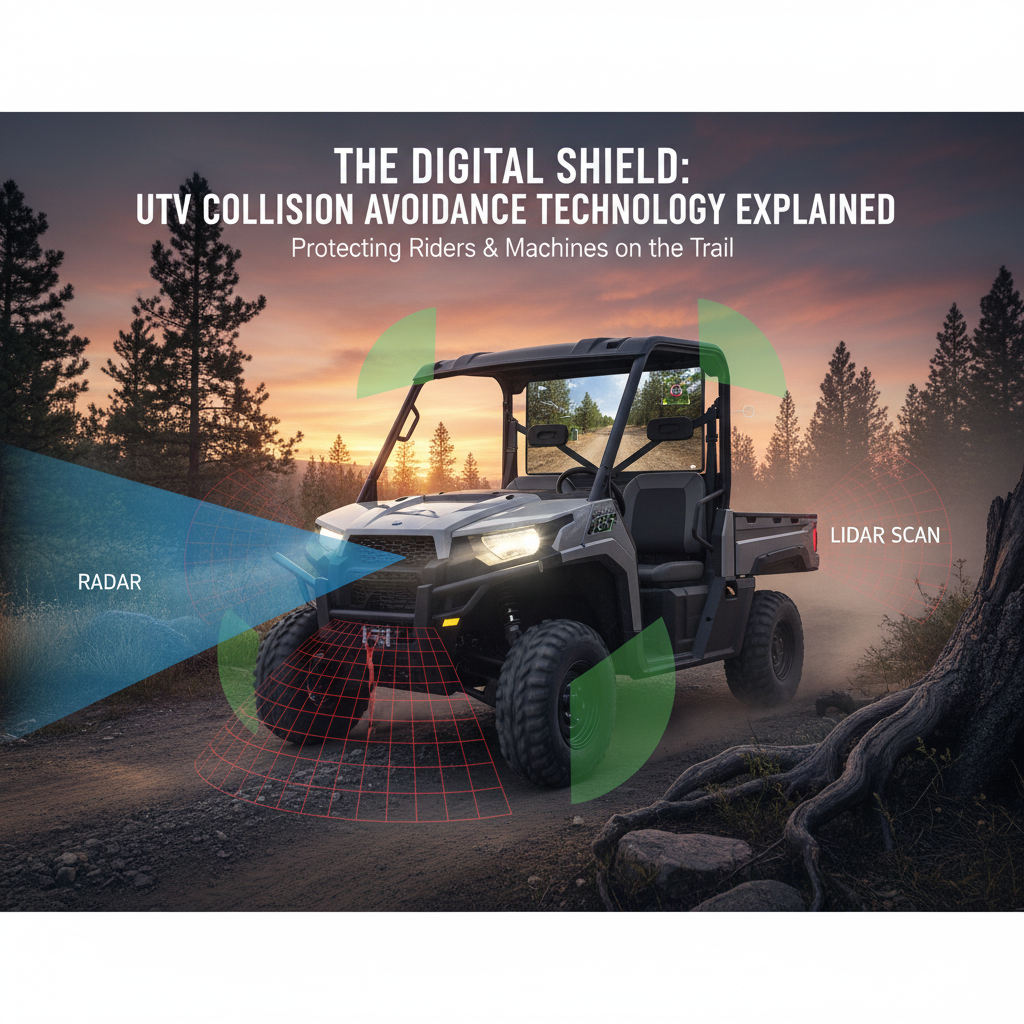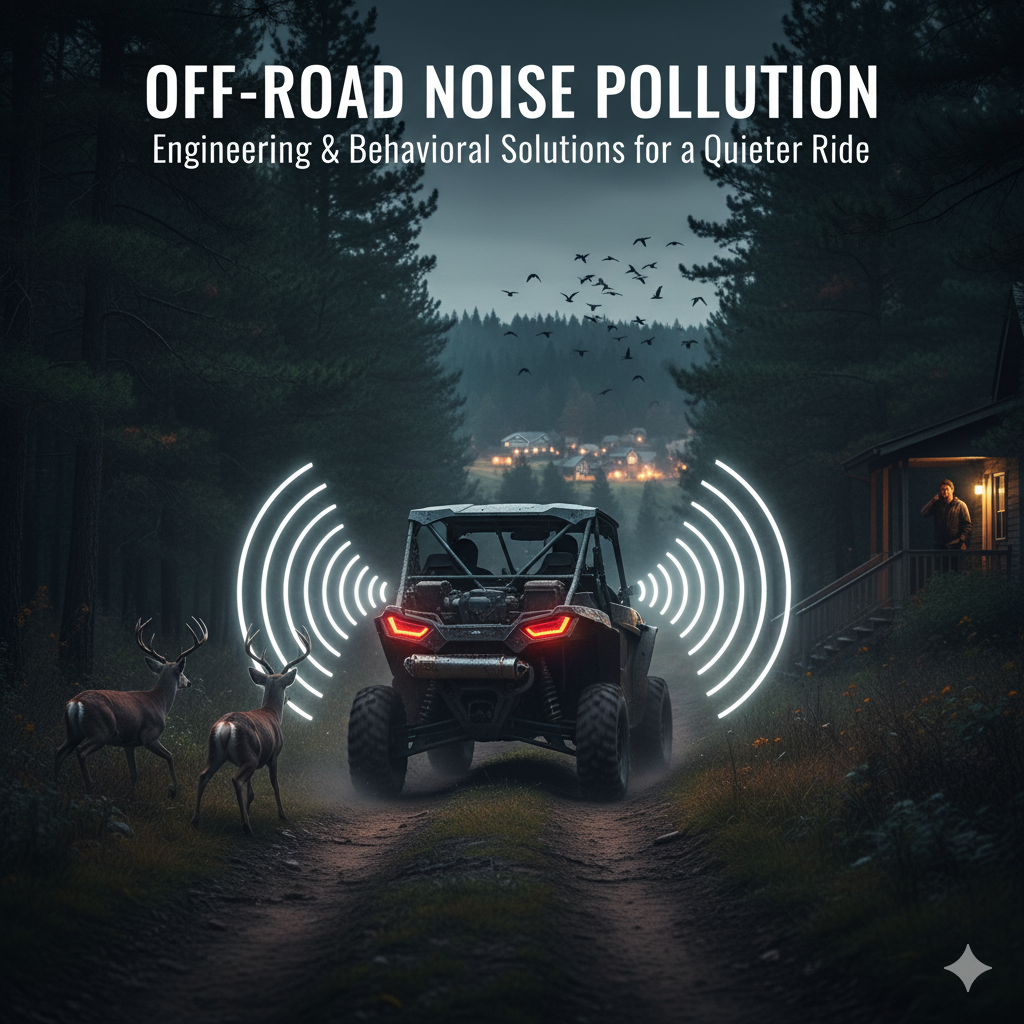The sight of a child confidently and safely operating a UTV is a source of pride for any off-road enthusiast parent. UTVs offer an incredible opportunity for young people to learn responsibility, mechanical skills, and a deep appreciation for the outdoors. However, the sheer power and size of these machines mean that the transition from passenger to operator must be handled with the utmost care and structure.
This is where youth UTV education programs become absolutely non-negotiable. Sending a child out on a UTV without formal training is not just risky; it’s irresponsible. The statistics on youth off-road vehicle accidents are sobering, and the single most effective way to mitigate that risk is through certified, age-appropriate education.
In this comprehensive guide, we will provide parents with a complete roadmap to youth UTV safety. We will detail the essential safety standards, break down the leading education programs like those offered by ROHVA, clarify the complex landscape of age and size restrictions, and outline the core curriculum that will turn your child into a safe, responsible, and skilled off-road operator.

Phase 1: The Critical Importance of Youth-Specific Safety
The primary goal of any youth UTV program is to instill a culture of safety that lasts a lifetime. This begins with understanding the fundamental safety standards set by industry and government bodies.
Age-Appropriate Vehicles: Size Matters
The most critical rule for youth UTV operation is that the vehicle must be age-appropriate. A child should never operate an adult-sized UTV. This is a core recommendation from the Consumer Product Safety Commission (CPSC) and industry organizations.
- Why Adult UTVs are Dangerous for Kids: Adult UTVs are too heavy, too powerful, and have controls (steering wheel, pedals) that are positioned for an adult. A child lacks the physical strength, reach, and cognitive ability to safely control an adult machine, especially in an emergency.
- Youth Models: Manufacturers offer youth-specific UTVs (often called RZRs, Mavericks, or Commanders in youth trims) that are smaller, lighter, and have speed-limiting features. These are the only vehicles a child should operate.
The Five Golden Rules for Young Riders
Every youth UTV education program emphasizes these core safety principles:
- Always Wear a Helmet: A properly fitted, DOT-approved helmet is mandatory.
- Wear Protective Gear: Goggles, long sleeves, long pants, gloves, and over-the-ankle boots are essential.
- No Passengers on Single-Rider Vehicles: UTVs are designed for passengers, but ATVs are not. Never allow a child to carry a passenger on a single-rider ATV.
- Ride Off-Road Only: UTVs are not designed for paved roads. Keep all operation on designated off-road trails.
- Never Ride Under the Influence: This applies to all riders, regardless of age.

Phase 2: Leading Youth UTV Education Programs
Parents should seek out formal training that is recognized by the industry. The gold standard for UTV training is the Recreational Off-Highway Vehicle Association (ROHVA).
The ROHVA Basic DriverCourse (RBDC)
While the full RBDC is for adults, the principles and the hands-on training are the foundation for youth programs. Many youth programs, including those used by organizations like the Boy Scouts of America (BSA), require ROHVA certification or an equivalent.
- Curriculum Focus: ROHVA training emphasizes the unique dynamics of UTVs, including the importance of seatbelts, doors/nets, and keeping all limbs inside the vehicle. The hands-on portion is crucial for teaching safe turning, braking, and hill maneuvers.
- BSA Standard FA-711: The BSA, a major organization utilizing UTVs for youth activities, requires all UTV operators to have both online and hands-on training through ROHVA or an equivalent program, highlighting the industry’s commitment to formal education.
State-Mandated Safety Courses
Many states have laws that require a safety certificate for youth UTV operation, often for those under 16.
- Online and In-Person Options: These courses are often offered through state agencies or approved third-party providers (like Offroad-ed.com). They cover state-specific laws, trail etiquette, and general safety.
- Compliance: Completing a state-mandated course ensures legal compliance and provides a foundational understanding of responsible riding.
Manufacturer-Sponsored Training
Many UTV manufacturers offer free or discounted training to new buyers, which often includes youth-specific modules or referrals to certified instructors. Always check with your dealer or the manufacturer’s website.
[AFFILIATE LINK: Recommend a high-quality, youth-sized full-face helmet that meets DOT standards. Context: The most important piece of safety gear for any young rider, emphasizing proper fit and certification.]

Phase 3: Core Curriculum—What Your Child Will Learn
A comprehensive youth UTV education program should cover a range of skills, from mechanical checks to advanced maneuvering.
| Module | Key Learning Objectives | Safety Outcome |
|---|---|---|
| Pre-Ride Inspection | T-CLOCS check, fluid levels, tire pressure, securing cargo. | Child can perform a safe pre-ride inspection without prompting. |
| Vehicle Control | Proper starting/stopping, smooth acceleration, steering input, use of engine braking. | Child can operate the UTV smoothly and predictably on flat terrain. |
| Terrain Management | Safe hill climbing/descending, traversing obstacles, line selection. | Child understands the limits of the vehicle and how to avoid rollovers. |
| Emergency Procedures | Rollover response, basic field repairs (e.g., tire plug), communication protocols. | Child knows how to react calmly and safely in an emergency situation. |
| Trail Ethics | “Leave No Trace” principles, trail signage, yielding to other users, environmental respect. | Child becomes a responsible steward of the off-road environment. |
The Importance of Hands-On Training
While online courses provide essential knowledge, they are no substitute for hands-on training with a certified instructor.
- Real-World Feedback: An instructor can immediately correct poor habits, such as improper steering or braking technique, which can be dangerous on the trail.
- Controlled Environment: Training takes place on a closed range, allowing the child to practice emergency maneuvers (like quick stops and swerving) in a safe, controlled setting.
- Skill Progression: The curriculum is designed to build skills incrementally, ensuring the child is not overwhelmed and is ready for the next level of complexity.

Phase 4: Navigating State Laws and Parental Responsibility
The legal landscape for youth UTV operation is complex and varies significantly by state. Parents must be aware of the laws in their area and any area they plan to visit.
State-Specific Regulations
While federal guidelines exist, state laws dictate minimum operating age, whether a safety certificate is required, and where a UTV can be operated.
- Minimum Age: Many states set a minimum age for UTV operation on public lands (often 12 or 16), and some require a licensed adult to accompany the child.
- Safety Certificate Requirement: A growing number of states require a mandatory safety course for all operators under a certain age.
- Private Land Exemption: In most states, these regulations do not apply to private land owned or leased by the child’s parent or guardian, but the safety principles remain the same.
Parental Supervision and Role Modeling
Ultimately, the responsibility for a child’s safety rests with the parent.
- Constant Supervision: Even after certification, young riders require constant, direct adult supervision until they demonstrate consistent, mature, and safe operating habits.
- Lead by Example: Parents must be the best role models. Always wear your helmet, buckle your seatbelt, and adhere to all safety rules and trail etiquette. A child will mimic the behavior they see.
- Gradual Progression: Start on easy, flat terrain and gradually introduce more challenging trails as the child’s skill and confidence grow. Never push a child beyond their comfort level.
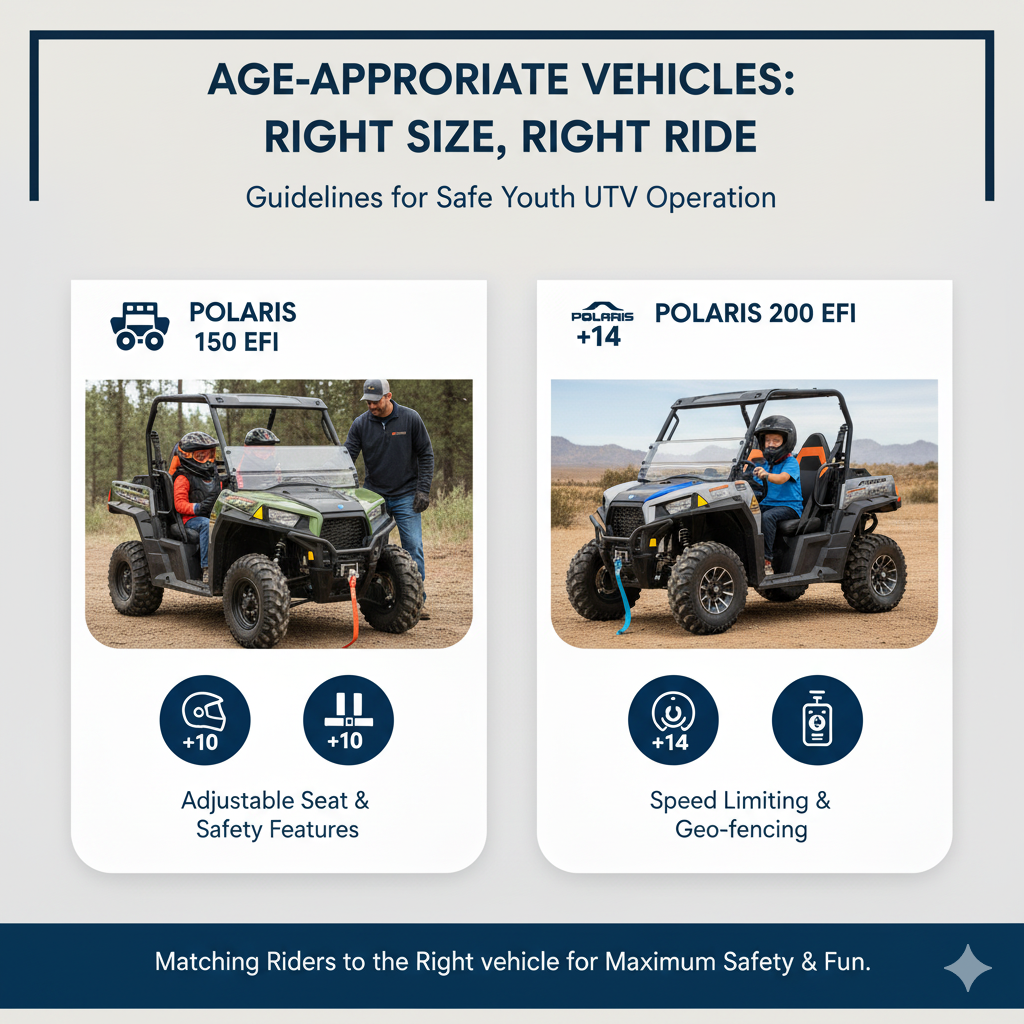
Conclusion: Investing in a Safe Future
Youth UTV education programs are the bridge between a child’s excitement for off-roading and the responsible operation of a powerful machine. By prioritizing certified training, adhering to age-appropriate vehicle guidelines, and providing consistent supervision, parents are doing more than just teaching their children to drive. They are instilling life-long lessons in safety, responsibility, and environmental stewardship.
The future of the trail depends on the riders we train today. Make the investment in a formal education program, and you will be giving your child the greatest gift of all: the knowledge and confidence to enjoy the off-road world safely for years to come.
Train smart, ride safe, and enjoy the adventure!
References
[1] Recreational Off-Highway Vehicle Association (ROHVA) – Learn To Drive
[2] Consumer Product Safety Commission (CPSC) – OHV & ATV Safety
[3] Boy Scouts of America (BSA) – Successfully Implementing NCAP Standard FA-711: UTV Training
[4] ATV Safety Institute (ASI) – ATV Safety
[5] Edgar Snyder & Associates – ATV Laws and Requirements by State

